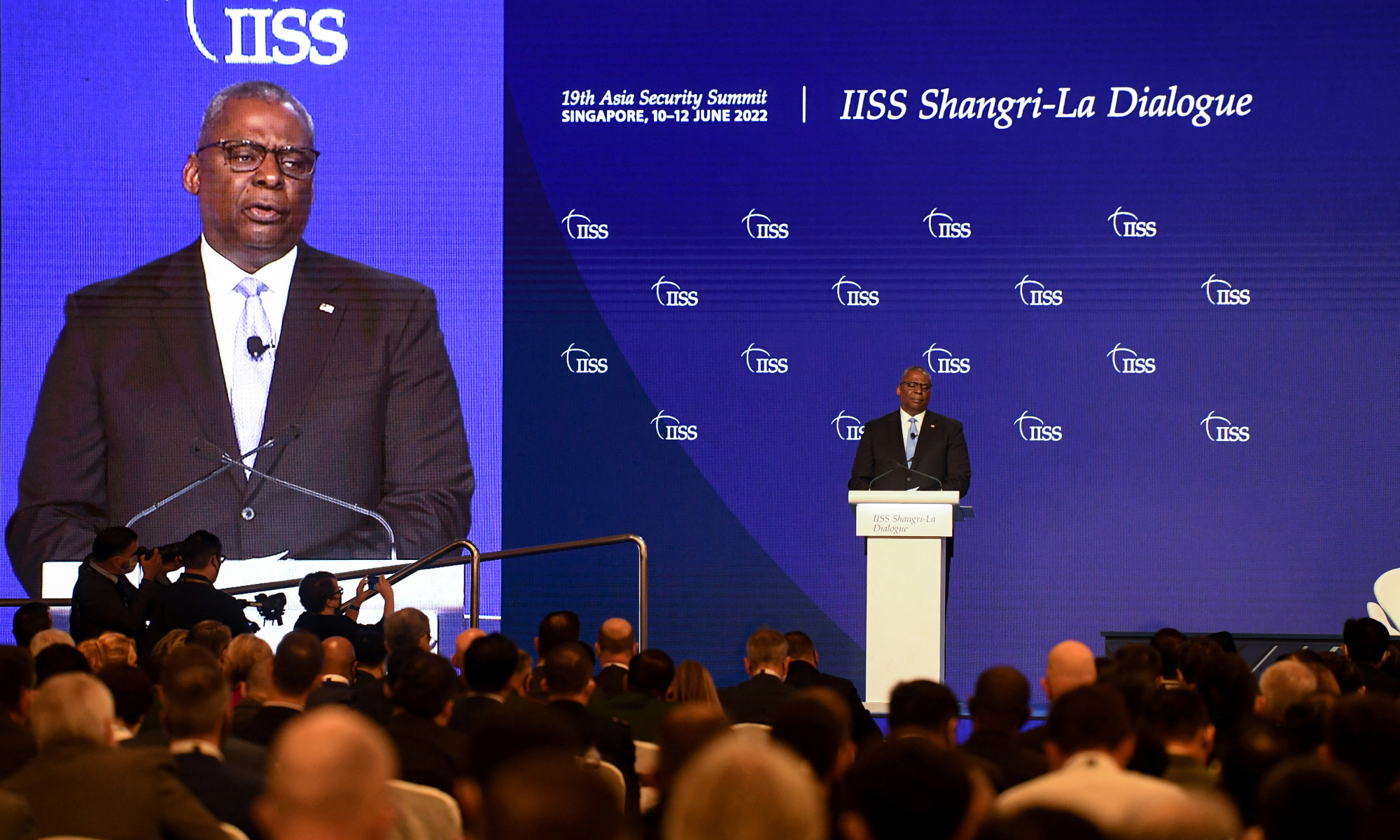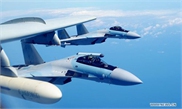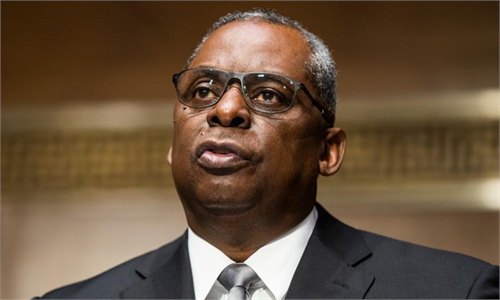US to beef up military integration targeting China as Pentagon chief embarks on trip to SK, Philippines
'Strengthen partnerships' can't hide strategy that using allies as pawn: analysts

US Defense Secretary Lloyd Austin speaks at the Shangri-La Dialogue summit in Singapore on June 11, 2022. Photo:AFP
In bid to "strengthen defense partnerships," US Defense Secretary Lloyd Austin embarked on a trip to South Korea and the Philippines on Sunday, a move that Chinese experts viewed as Washington's latest effort to beef up military integration that targets China in the western Pacific, especially in a cost-effective way of using "allies" as its disposable pawns and vanguards.
With the US shifting its global strategic focus to the Asia-Pacific region, experts warned regional countries to be wary of the dangers of US military planning to regional peace and stability, since their past, present and future lie in Asia.
According to a statement recently issued by the US Department of Defense, Austin will meet with senior government and military leaders of South Korea and the Philippines in the upcoming days, to "advance regional stability and further strengthen the defense partnerships."
It also stressed that the trip "reaffirms the deep commitment of the US to work in concert with allies and partners in support of the shared vision of preserving a free and open Indo-Pacific."
According to South Korean news outlets, Austin is likely to highlight the US' "security commitment" to South Korea during his visit to the nation, with the Korean Peninsula and Ukraine-Russia conflict issues of focus.
Citing Philippine Ambassador to the US Jose Manuel Romualdez, Philippine media said that Austin wants to interact with his Filipino counterpart, Secretary Carlito Galvez Jr, the newly appointed defense chief. Their topics are "not necessarily" about the South China Sea but also "overall global situation," according to the envoy.
Besides, Austin may have a discussion with Philippine President Ferdinand Romualdez Marcos Jr. on "defense treaty concerns," CNN Philippines reported.
Despite the possible discussions on the Russia-Ukraine conflict, North Korea and the South China Sea, the US' intention is always targeting China, said Zhu Feng, a professor of international relations at Nanjing University.
"The US has gradually shifted its global strategic focus to the Asia-Pacific region. In the future, it will further woo allies and strengthen strategic docking, intelligence and military deployment in the Western Pacific," Zhu told the Global Times. "It cannot be ruled out that there will be more US-led actual combat training and deployments in the future."
Li Haidong, a professor at the Institute of International Relations at the China Foreign Affairs University, told the Global Times on Sunday that the US tries to use its allies, such as Japan, South Korea and the Philippines, as pawns in its confrontation with China in the Asia-Pacific region.
The US wants to achieve an effect where its allies serve as a vanguard against China first, and then the US engages afterward in a so-called strategic competition with China in a cost-effective way, Li said.
The timing of Austin's visit parallels with NATO Secretary General Jens Stoltenberg's visit to South Korea and Japan from January 29 to February 1.
The US not only makes its Asian allies act according to its instructions on major issues, but also makes them actively strengthen contact with Washington's European allies to accelerate the pace of NATO's Asian-Pacific transformation, Li said.
However, the US plan is not a plan for peace, but a plan that is likely to lead to conflict and war, which is extremely harmful to regional peace and stability, Li remarked.
Austin's visit comes after the Philippines revealed that there has been discussion between Manila and Washington on conducting joint patrols in the South China Sea.
Apart from the "2+2" top foreign and defense officials' meeting in Washington in April, Philippine media said that Marcos may meet with US President Joe Biden as well in April. Beforehand, Marcos is reported to be meeting with Japanese Prime Minister Fumio Kishida to discuss economic and regional security in mid-February.
Since Marcos took office, the Philippines revived the dormant Enhanced Defense Cooperation Agreement (EDCA), which allows the US to deploy conventional forces to five bases in the Philippines. Marcos, on the other hand, also expressed great hope, confidence and determination to further develop bilateral relations to a higher level in a friendly atmosphere during his state visit to China in January.
"As a maritime neighbor of China and a member of ASEAN, it is indeed difficult for the Philippines to make decisions that satisfied all parties, especially against the backdrop of increased competition between China and the US… However, the future of the Philippines lies in the Asia-Pacific region, not as Washington's cannon fodder," Li said.
Political elites in the Philippines should be able to clearly recognize the essence of the overall US strategy that uses allies as pawn, Li noted.
By the end of 2021, China had been the Philippines' largest trading partner for six consecutive years and became its second-largest export market, according to China's Ministry of Commerce. From January to November 2022, trade between China and the Philippines reached $80.41 billion, up 8.3 percent year-on-year.



